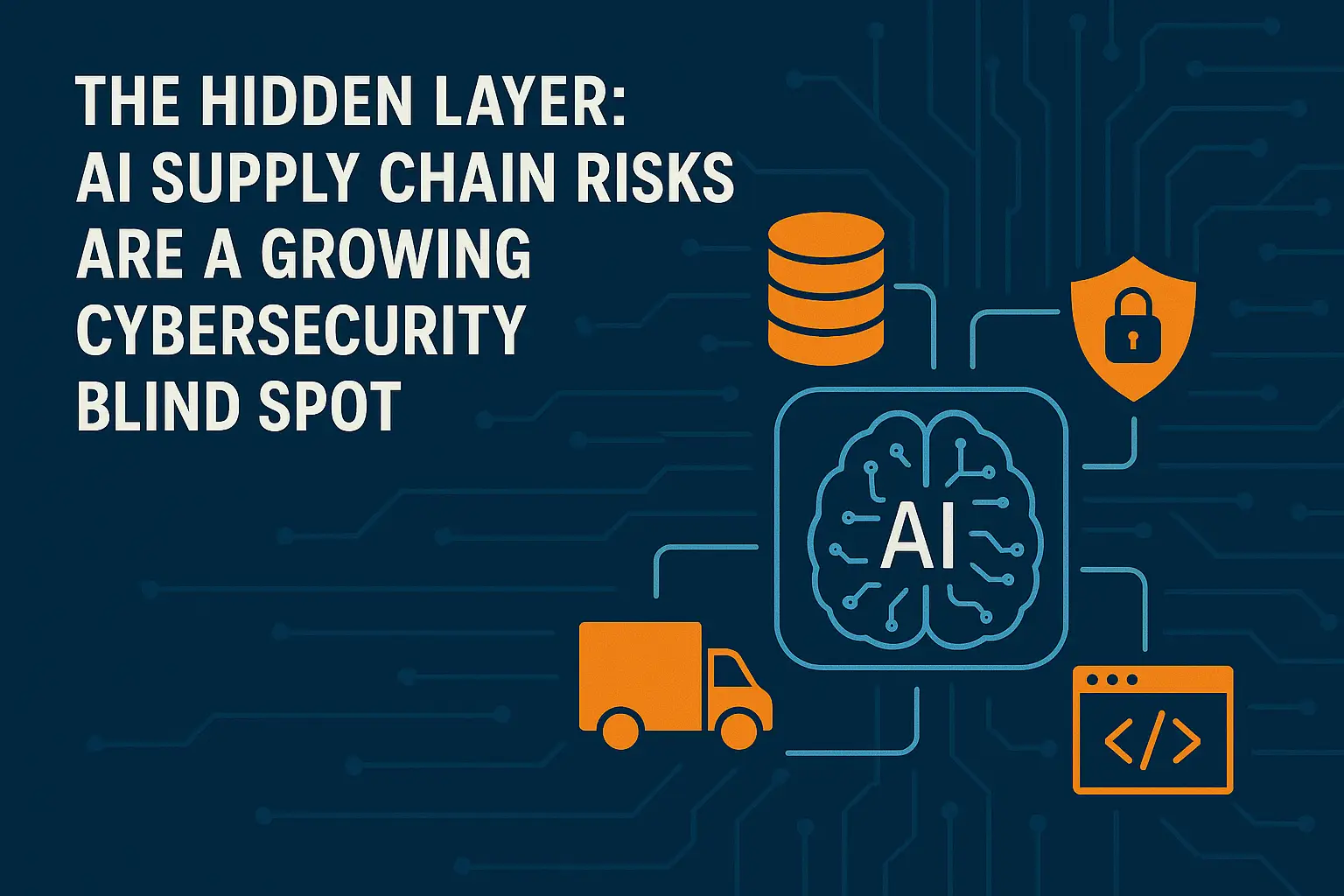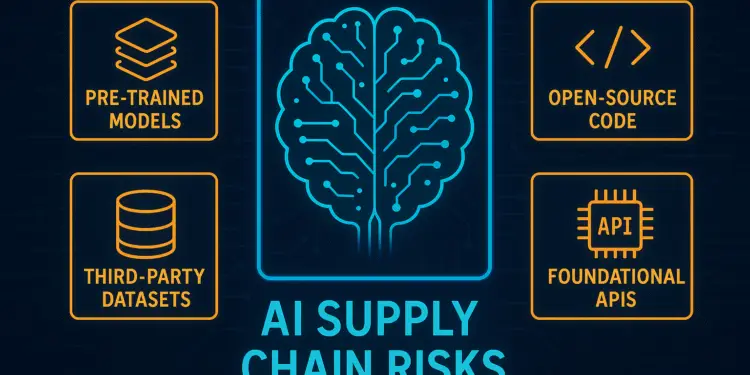AI systems don’t run on magic.
They rely on layers datasets, pre-trained models, open-source code, APIs, and plugins. Third parties often build or maintain these components. Each layer introduces hidden risk. Most organizations fail to track or secure this stack. That’s the blind spot.
AI Isn’t Just Code, It’s a Collection of Dependencies
Here’s how most AI tools are made:
- Engineers download pre-trained models from platforms like Hugging Face.
- They integrate open-source scripts to fine-tune and deploy them.
- They feed in public datasets scraped from the internet.
- They connect to external APIs to add smart functions.
These steps accelerate development. But they also introduce unverified dependencies into critical systems.

The Risks Are Already Real
These risks have already caused real problems.
- In 2023, researchers showed how attackers could poison image datasets. These poisoned inputs made models behave in dangerous ways even after tuning.
- Prompt injection attacks manipulated LLM-based plugins using crafted prompts or URLs.
- Malicious actors uploaded backdoored AI code to GitHub, and developers unknowingly deployed it.
- Poorly integrated APIs caused LLMs to leak private or sensitive data.
Security teams often miss these issues because they lack visibility and oversight.
Why Security Teams Miss AI Supply Chain Risk
Traditional cybersecurity focuses on endpoints, applications, and known software. AI doesn’t follow that model.
Data scientists move fast. They don’t always involve security teams or follow DevSecOps workflows. As a result, AI systems enter production with:
- Unknown or untrusted data
- Unvetted models
- Third-party logic
- Unsecured integrations
These gaps turn innovation into a risk.
What About Compliance? The GRC Gap
Governance, Risk, and Compliance (GRC) teams haven’t caught up yet.
- No one maintains a checklist for third-party AI risks.
- Few organizations build or update AI SBOMs.
- Teams rarely document where models or datasets come from.
But this is changing.
- The EU AI Act will enforce transparency for high-risk systems.
- NIS2 expands cybersecurity obligations across supply chains.
- The NIST AI Risk Management Framework encourages traceability and assurance.
If you ignore your AI supply chain, you risk non-compliance—and business impact.
5 Steps to Reduce AI Supply Chain Risk
Take these actions now to improve your AI supply chain security:
1. Create an AI SBOM
List every model, dataset, and tool. Include who created it, where it came from, and its license. Keep this list updated.
2. Track Model Lineage
Document how you trained each model. Include sources, methods, and datasets.
3. Red-Team Your AI Systems
Test your models for prompt injections, adversarial inputs, and logic flaws. Simulate realistic threats.
4. Vet Your AI Vendors
Ask vendors for security documentation. Review their update policies and practices. Don’t rely on claims verify them.
5. Train Security and GRC Teams
Teach your teams how to assess AI risks. Give them tools and frameworks tailored for AI.
This Is Not Just Technical, It’s Business Risk
AI system failure affects more than IT.
A compromised model can lead to:
- Data breaches
- Biased decisions
- Reputational damage
- Legal and regulatory violations
Each of these can cost your business far more than traditional bugs.
Final Thought: If You Can’t Trace It, You Can’t Trust It
AI will keep growing across industries. But every model depends on external components you may not control. Trace your supply chain. Secure it. Audit it.
At Sumtrix, we help you see the parts others miss, before they become problems.
















